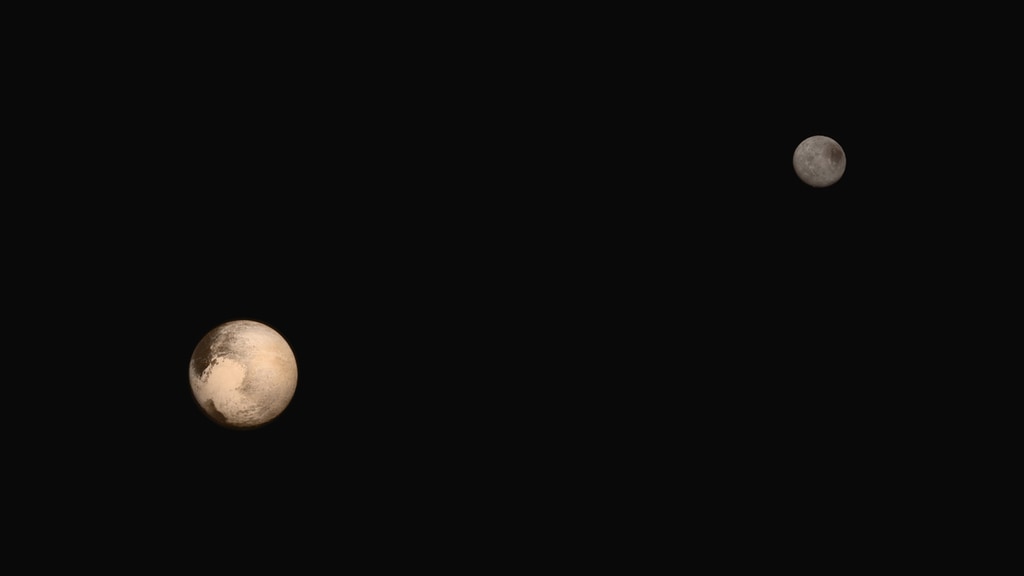Moons In Chaos

Pluto’s moons Nix and Hydra tumble unpredictably in their orbits.
How long a day lasts and where the sun rises and sets are impossible to forecast on one of Pluto’s five moons, Nix. When NASA’s Hubble Space Telescope observed odd changes in the sunlight Nix was reflecting, researchers realized that Nix does not rotate predictably like Earth’s moon. Instead, it tumbles chaotically as it revolves around Pluto. Nix’s erratic nature comes from orbiting a double planet: Pluto and its largest moon, Charon, which is about half Pluto’s size. The two swing around each other like a dumbbell with unequal weights, shifting the gravity field that Nix experiences and tugging the potato-shaped moon in different directions about its axis. The same chaos afflicts Hydra, another tiny Pluto moon. Watch the video to see an animation showing Nix’s wobbles as it orbits Pluto.
This simulation shows how Nix might move as seen from Pluto. The video compresses four years of modeled motions into less than two minutes.

This image of Nix was taken in 2015. The moon's chaotic movements were predicted by the way light reflected off its surface over a period of years.

Similar observations show Pluto's moon Hydra (above) also wobbles chaotically on its axis.

Orbit diagram showing the location of Nix and Hydra in relation to Pluto and its largest moon Charon.
Credits
Please give credit for this item to:
NASA's Goddard Space Flight Center
Video courtesy of NASA/ESA/M. Showalter, SETI Institute/G. Bacon, STScI
Images courtesy of NASA/Johns Hopkins University Applied Physics Laboratory/Southwest Research Institute
-
Scientist
- Mark Showalter (SETI Institute)
-
Writer
- Alison Takemura (USRA)
Release date
This page was originally published on Tuesday, February 16, 2016.
This page was last updated on Wednesday, May 3, 2023 at 1:48 PM EDT.
